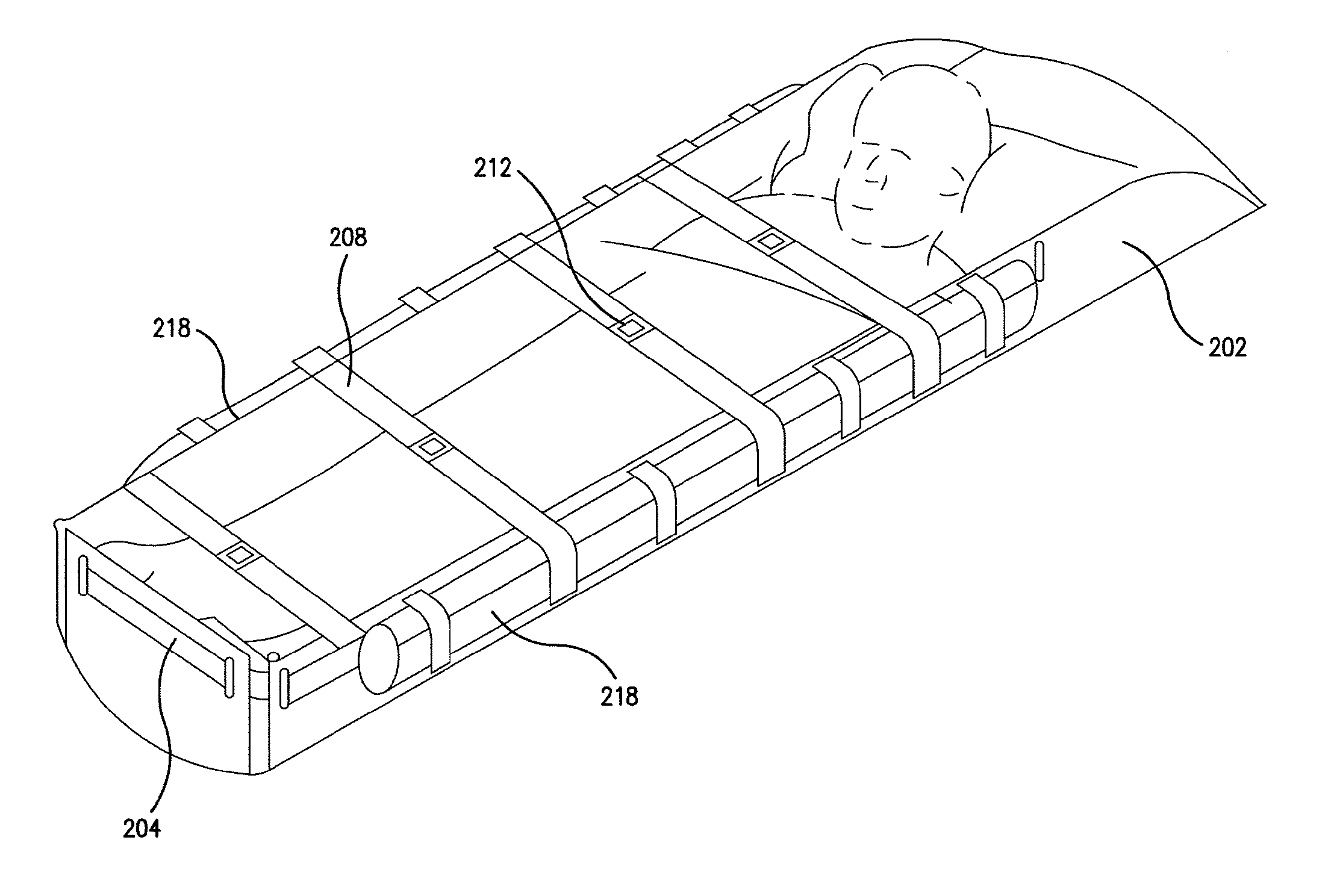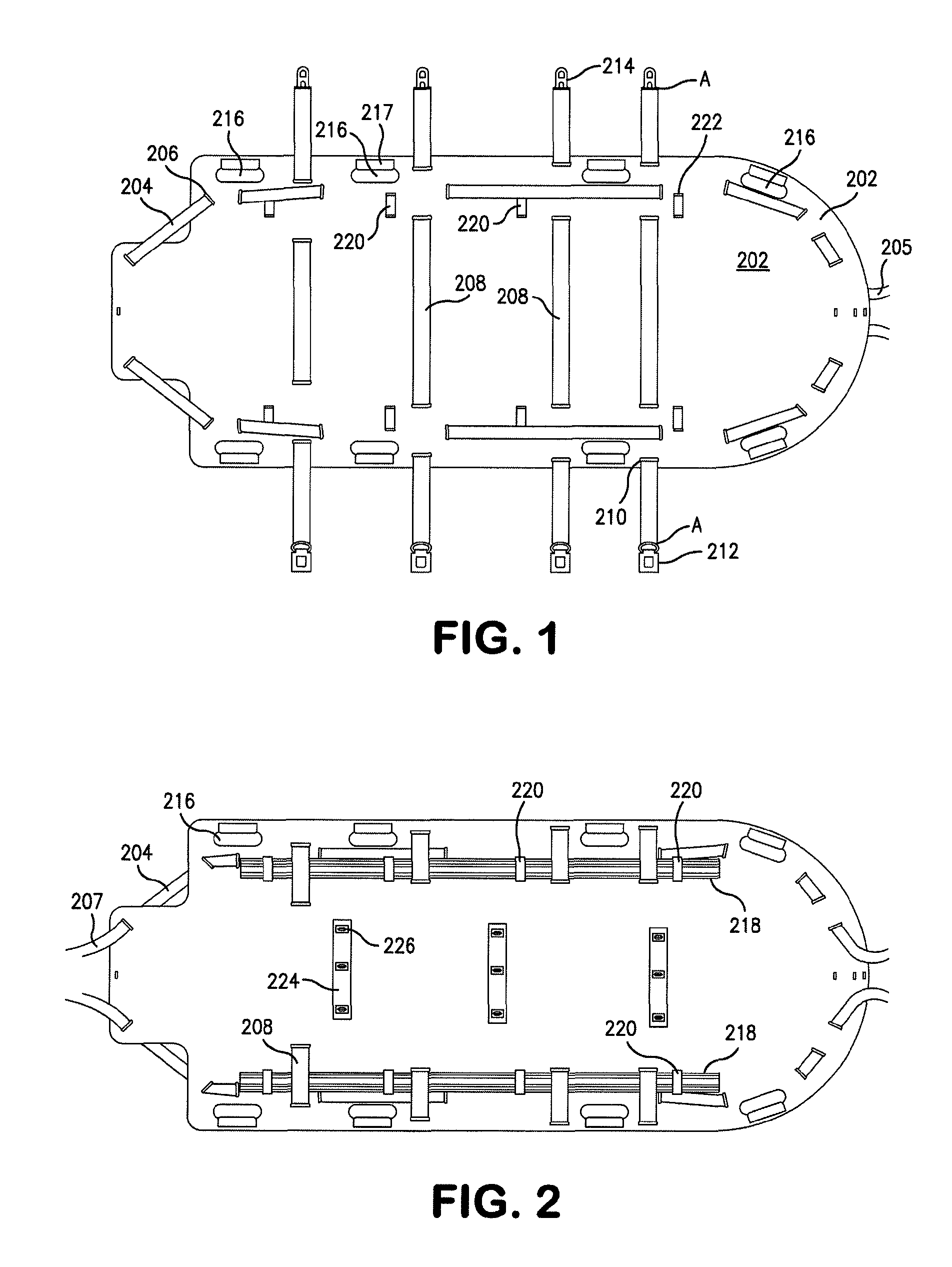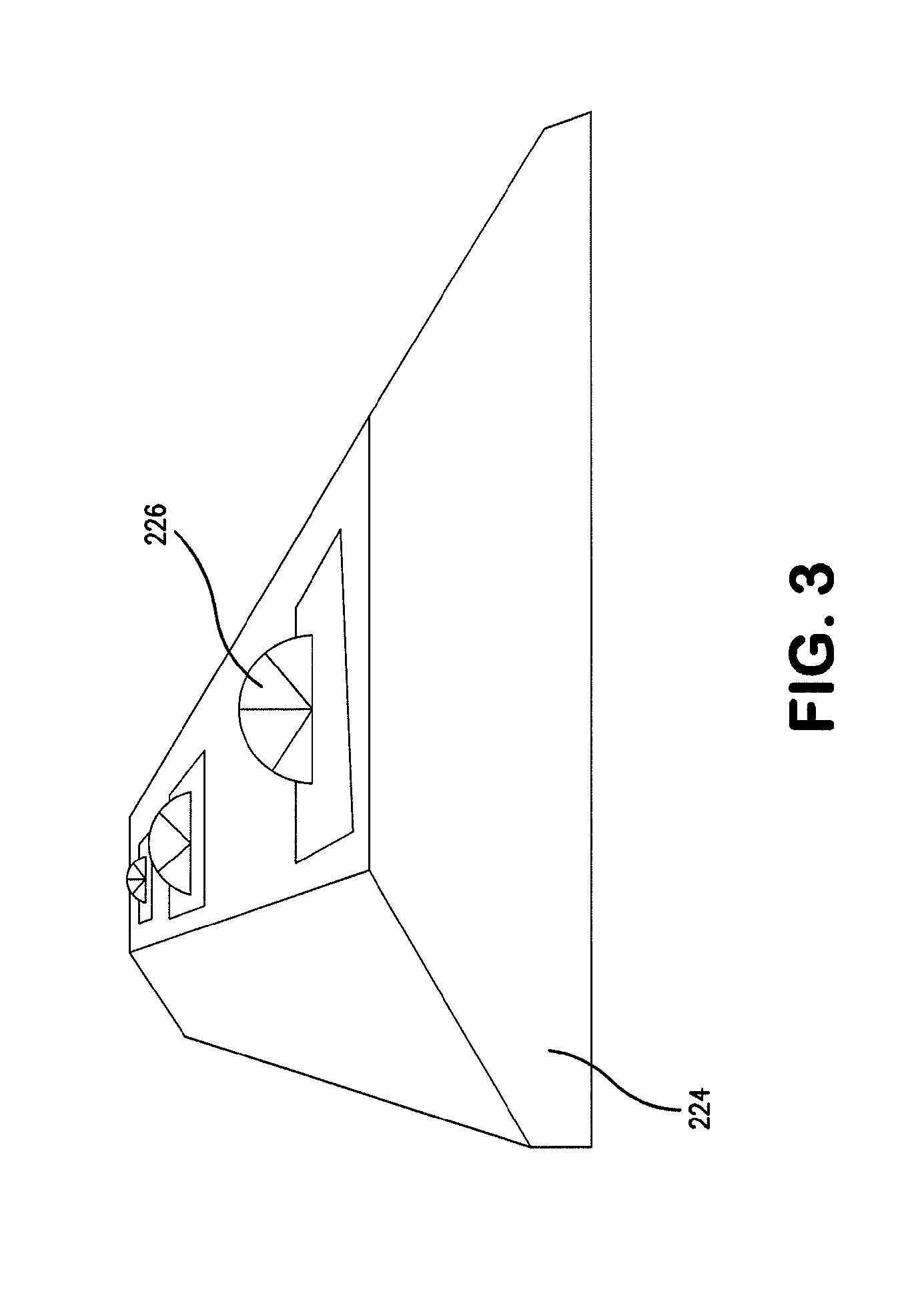Evacuation sled for non-ambulatory patients
a non-ambulatory patient and sled technology, applied in the field of rescue and/or evacuation devices, can solve the problems of imposing undue or excessive pressure on the bodies of some evacuees, affecting the safety of patients,
- Summary
- Abstract
- Description
- Claims
- Application Information
AI Technical Summary
Benefits of technology
Problems solved by technology
Method used
Image
Examples
Embodiment Construction
[0026]A preferred embodiment of the present invention is described with reference to FIG. 1 wherein a floating evacuation sled 200 is shown. The sled 200 preferably comprises a semi flexible base structure 202, preferably made of a sheet of high density polyethylene (HDPE), although any suitable material may be used, such as Kevlar, composites, resins, other high density plastics, etc. The base 202 is sufficiently flexible that it can be rolled into a cylinder for storage and transportation, but sufficiently rigid so that, when curled into a half cylindrical shape, it assumes sufficient rigidity to support an adult (up to 250 lbs.) lying therein The base 202 is preferably about 75 inches to about 100 inches, more preferably about 80 inches to about 95 inches, and most preferably about 85 inches to about 90 inches long, with a width of about 35 inches to about 55 inches, more preferably about 40 inches to about 50 inches, and most preferably about 45 inches to about 48 inches. Howeve...
PUM
 Login to View More
Login to View More Abstract
Description
Claims
Application Information
 Login to View More
Login to View More - R&D
- Intellectual Property
- Life Sciences
- Materials
- Tech Scout
- Unparalleled Data Quality
- Higher Quality Content
- 60% Fewer Hallucinations
Browse by: Latest US Patents, China's latest patents, Technical Efficacy Thesaurus, Application Domain, Technology Topic, Popular Technical Reports.
© 2025 PatSnap. All rights reserved.Legal|Privacy policy|Modern Slavery Act Transparency Statement|Sitemap|About US| Contact US: help@patsnap.com



